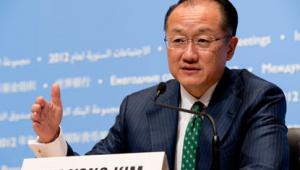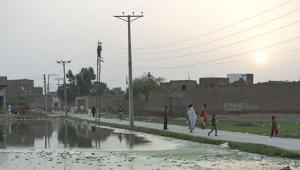China established the Asian Infrastructure Investment Bank (AIIB) in October 2014 and is expected to be operational by the end of this year. It already has over 30 members and has been designed to boost investment in areas such as transport and energy, similar to the US-led Asian Development Bank.
However, the US has voiced its concern at the UK and others for supporting the bank, warning that the AIIB could undermine existing multilateral institutions. Kim also said the Washington-based World Bank would work with the New Development Bank, established last year by the BRICS countries – Brazil, Russia, India, China and South Africa – to end extreme poverty by 2030.
He said the two new multilateral banks could help bridge financing gaps in areas such as infrastructure, energy, and water. ‘We estimate that the world needs an additional $1 to $1.5 trillion dollars every year to be invested in infrastructure – roads, bridges, railways, airports, and energy plants,’ Kim said.
‘By 2030, we will most likely also need 40% more energy and face a 40% shortfall of water – pressures that may well be further accelerated by climate change.’
The end of extreme poverty is in reach, Kim stated, but achieving this ambitious goal would require greater collaboration between governments, the private sector, and multilateral development bank partners.
‘It is our hope – indeed, our expectation – that these new entries will join the world’s multilateral development banks and our private sector partners on a shared mission to promote economic growth that helps the poorest,’ he said.
‘I will do everything in my power to find new and innovative ways to work with these new institutions.’
Kim also set out a broad strategy to end extreme poverty summing it up in three words: grow, invest and insure.
He said there was no single blueprint for countries on how they deploy the three-pronged strategy to end extreme poverty, but that it pointed to priorities for the future.
He said, however, that it must include an increase in agricultural productivity, infrastructure building to provide access to energy, irrigation, and markets, and the encouragement of greater and freer trade.
On top of that there must be investment in the health and education of women and children, and an implementation of social safety nets and social insurance, including initiatives that protect against the impact of natural disasters and pandemics.




